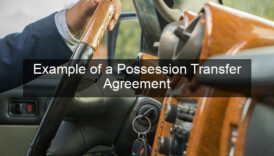How to Do Vehicle Wrapping?

- How to Do Vehicle Wrapping?
- Preparing Your Canvas: The Foundation of a Flawless Wrap
- Cleaning and Decontamination: The First Crucial Step
- Disassembly and Measurement: Precision is Key
- Choosing the Right Vinyl: A World of Options
- The Art of Application: Transforming Your Vehicle
- Positioning and Tacking: The Initial Steps
- Heating and Stretching: Conforming to Curves
- Squeegeeing and Finishing Touches: Achieving a Seamless Look
- Post-Installation Care: Maintaining Your Investment
- Initial Curing Time: Patience is Key
- Long-Term Maintenance: Protecting Your Wrap
- Conclusion

Transforming your vehicle into a mobile billboard with a vibrant, eye-catching wrap is a powerful way to advertise your business or simply express your personal style. But achieving a professional-looking result requires more than just slapping on some vinyl. This comprehensive guide will delve into the intricacies of vehicle wrapping, providing you with the knowledge and insights needed to navigate this exciting process, whether you’re a DIY enthusiast or considering professional installation. From surface preparation to post-installation care, we’ll cover every step, ensuring you’re equipped to make informed decisions and achieve a stunning, long-lasting finish. Vehicle wrapping is an investment, and understanding the process is crucial for maximizing its impact and longevity. So, buckle up and get ready to learn everything you need to know about how to do vehicle wrapping.

Preparing Your Canvas: The Foundation of a Flawless Wrap
Cleaning and Decontamination: The First Crucial Step
Before any vinyl touches your vehicle, meticulous cleaning is paramount. This involves a thorough wash using a high-quality automotive soap and water, followed by a degreasing process to remove any lingering contaminants like wax, oil, or road grime. Even seemingly invisible residues can compromise the adhesion of the vinyl, leading to premature lifting or bubbling.
After washing and degreasing, a clay bar treatment is highly recommended. This process removes embedded contaminants that washing alone can’t tackle, ensuring a perfectly smooth surface for the vinyl to adhere to. Think of it as polishing your canvas before applying paint; it creates the ideal foundation for a flawless finish.
Finally, a final wipe-down with isopropyl alcohol further ensures a pristine surface, removing any remaining traces of cleaning agents and preparing the vehicle for the vehicle wrapping process.
Disassembly and Measurement: Precision is Key
Depending on the complexity of the wrap design, certain parts of the vehicle may need to be disassembled. This could include door handles, mirrors, or trim pieces. This allows for a cleaner, more seamless application and prevents the vinyl from stretching or tearing around complex curves.
Accurate measurements are essential for ordering the correct amount of vinyl and ensuring a proper fit. This involves carefully measuring every panel of the vehicle, taking into account any curves or contours. Precise measurements minimize waste and ensure that the vinyl conforms perfectly to the vehicle’s shape.
Using a digital measuring tool can significantly improve accuracy, especially for complex curves and angles. This ensures that the vinyl is cut to the correct dimensions, minimizing the risk of misalignment during installation.
Choosing the Right Vinyl: A World of Options
The market offers a vast array of vinyl options, each with its own characteristics and benefits. Cast vinyl is generally considered the premium choice for vehicle wrapping due to its conformability and durability. It’s thinner and more flexible, allowing it to adhere seamlessly to complex curves and contours.
Calendered vinyl is a more budget-friendly option, but it’s thicker and less conformable, making it more suitable for flat surfaces or simple curves. Understanding the differences between vinyl types is crucial for choosing the right material for your specific needs and budget.
Consider factors like the complexity of your vehicle’s shape, the desired finish (gloss, matte, satin), and the longevity of the wrap when selecting your vinyl. Consulting with a professional installer can provide valuable insights and recommendations based on your specific requirements.
The Art of Application: Transforming Your Vehicle
Positioning and Tacking: The Initial Steps
With the vehicle prepared and the vinyl cut to size, the application process begins. This involves carefully positioning the vinyl on the vehicle’s surface, ensuring proper alignment and avoiding wrinkles or creases. Tacking the vinyl in place with small pieces of tape helps secure it during the initial stages of application.
Working in sections allows for greater control and precision. Start with smaller, flatter areas before moving on to more complex curves and contours. This gradual approach minimizes the risk of air bubbles and wrinkles, ensuring a smoother, more professional-looking finish.
Patience and attention to detail are key during this stage. Rushing the process can lead to mistakes that are difficult to correct later on, compromising the overall appearance of the wrap.
Heating and Stretching: Conforming to Curves
A heat gun is an indispensable tool for vehicle wrapping, especially when working with complex curves and contours. Applying heat to the vinyl allows it to become more pliable and stretchable, enabling it to conform seamlessly to the vehicle’s shape.
Care must be taken to avoid overheating the vinyl, which can cause it to distort or discolor. Use the heat gun in a sweeping motion, keeping it a safe distance from the vinyl’s surface to prevent damage.
Practice and experience are crucial for mastering the art of heating and stretching vinyl. Start with simple curves before tackling more complex areas to develop your skills and avoid costly mistakes.
Squeegeeing and Finishing Touches: Achieving a Seamless Look
A squeegee is used to smooth out the vinyl and remove any air bubbles or wrinkles. Working from the center outwards, apply firm, even pressure to ensure proper adhesion and a smooth, wrinkle-free finish.
Overlapping seams are trimmed and sealed to create a seamless look. This involves using a sharp knife or blade to carefully trim the excess vinyl, ensuring a clean, precise cut.
Post-heating is the final step, further activating the adhesive and ensuring a strong, long-lasting bond. This helps prevent lifting or bubbling over time, maintaining the integrity of the wrap.
Post-Installation Care: Maintaining Your Investment
Initial Curing Time: Patience is Key
After the installation is complete, the vinyl requires a curing period to fully adhere to the vehicle’s surface. During this time, it’s important to avoid washing the vehicle or exposing it to extreme temperatures.
The curing time can vary depending on the type of vinyl and the environmental conditions. It’s essential to follow the manufacturer’s recommendations for optimal curing and long-term performance.
Avoid high-pressure washing or harsh chemicals, which can damage the vinyl and shorten its lifespan. Gentle hand washing with mild soap and water is recommended for routine cleaning.
Long-Term Maintenance: Protecting Your Wrap
Regular washing and waxing can help protect the vinyl from UV damage and environmental contaminants. Using a high-quality automotive wax specifically designed for vinyl wraps can further enhance its protection and longevity.
Inspecting the wrap regularly for any signs of damage, such as lifting or bubbling, is crucial for early intervention. Addressing minor issues promptly can prevent them from becoming major problems down the line.
Storing the vehicle in a garage or covered area can significantly extend the life of the wrap, protecting it from the elements and minimizing the risk of fading or damage.
Conclusion
Vehicle wrapping offers a transformative approach to personalizing and advertising your vehicle. This meticulous process, from preparation to aftercare, demands precision and patience. By understanding the nuances of each stage, you can ensure a flawless, long-lasting finish. Whether you embark on a DIY project or entrust the task to professionals, informed decisions are paramount for achieving stunning results and maximizing your investment.
How long does a vehicle wrap typically last?
A professionally installed vehicle wrap can last anywhere from 5 to 7 years with proper care and maintenance.
Can I wrap my car myself?
While possible, vehicle wrapping is a complex process best left to experienced professionals for optimal results.
How much does it cost to wrap a vehicle?
The cost of a vehicle wrap varies depending on the size of the vehicle, the type of vinyl used, and the complexity of the design.
| Vinyl Type | Durability | Cost |
|---|---|---|
| Cast Vinyl | High | Higher |
| Calendered Vinyl | Moderate | Lower |
- Clean the vehicle thoroughly.
- Measure accurately.
- Choose the right vinyl.
